Imagine the image above, devoid of context, and subjected to a “caption this photo” contest.
A suitably cornball “winner”:
a quiet drink with a few mates.
The featured image was taken with a long lens (560 mm) at 11.12 am on 20 February 2020.
The photo immediately below was taken just a few seconds later, from almost exactly the same vantage point, overlooking a pond/reservoir, a few minutes away from Khichan…

As you can see, a wide-angle, panoramic view (26 mm lens) reveals an entirely different reality.
A great many of the thousands of Demoiselle cranes assembled on the pond’s shores were individuals who had just flown in, after they had enjoyed a hearty breakfast, courtesy of Jain villagers in Khichan.
The hospitable village is just a few minutes/kilometres distant from the pond; together, they offer the cranes a perfect “winter at the oasis” experience.
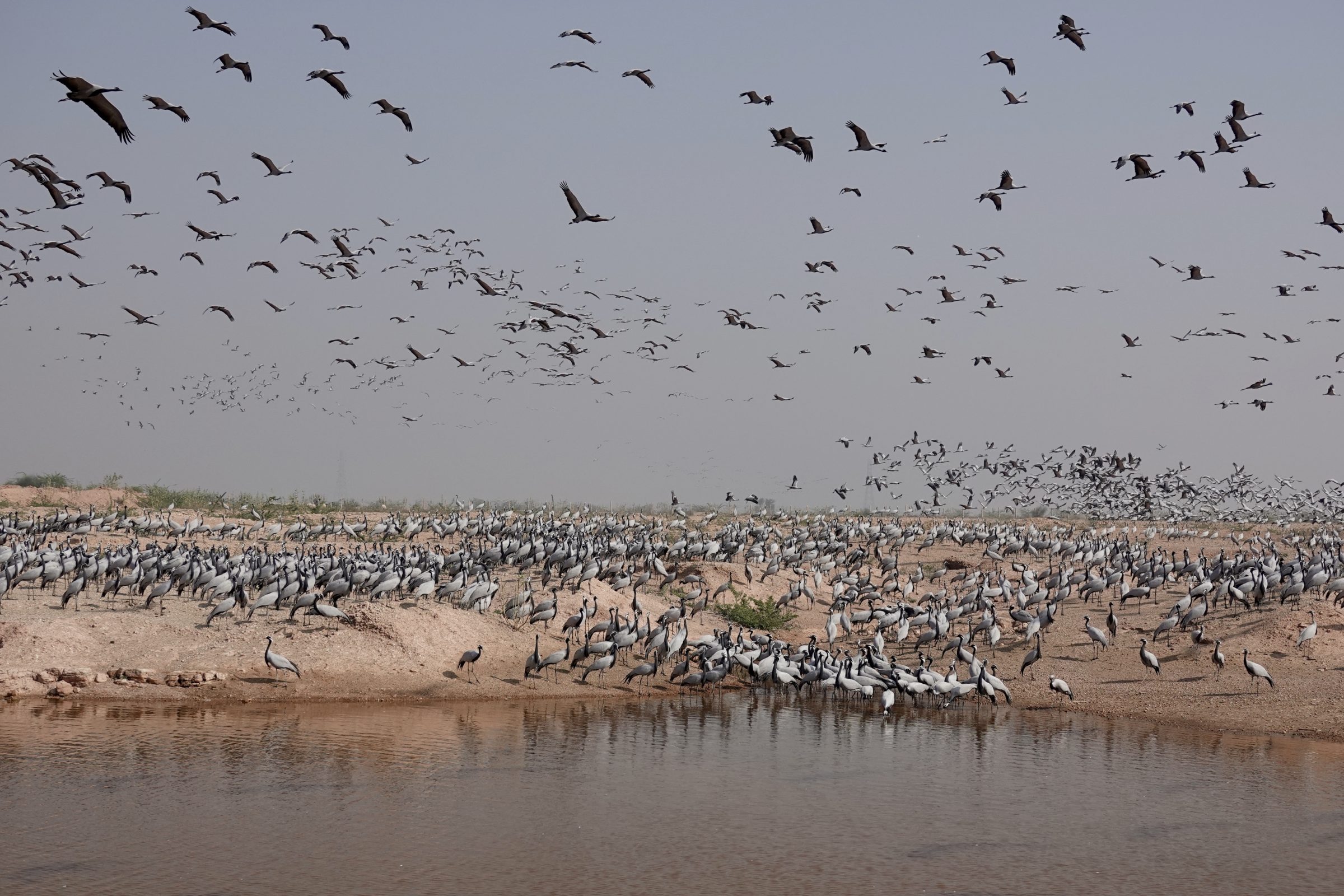
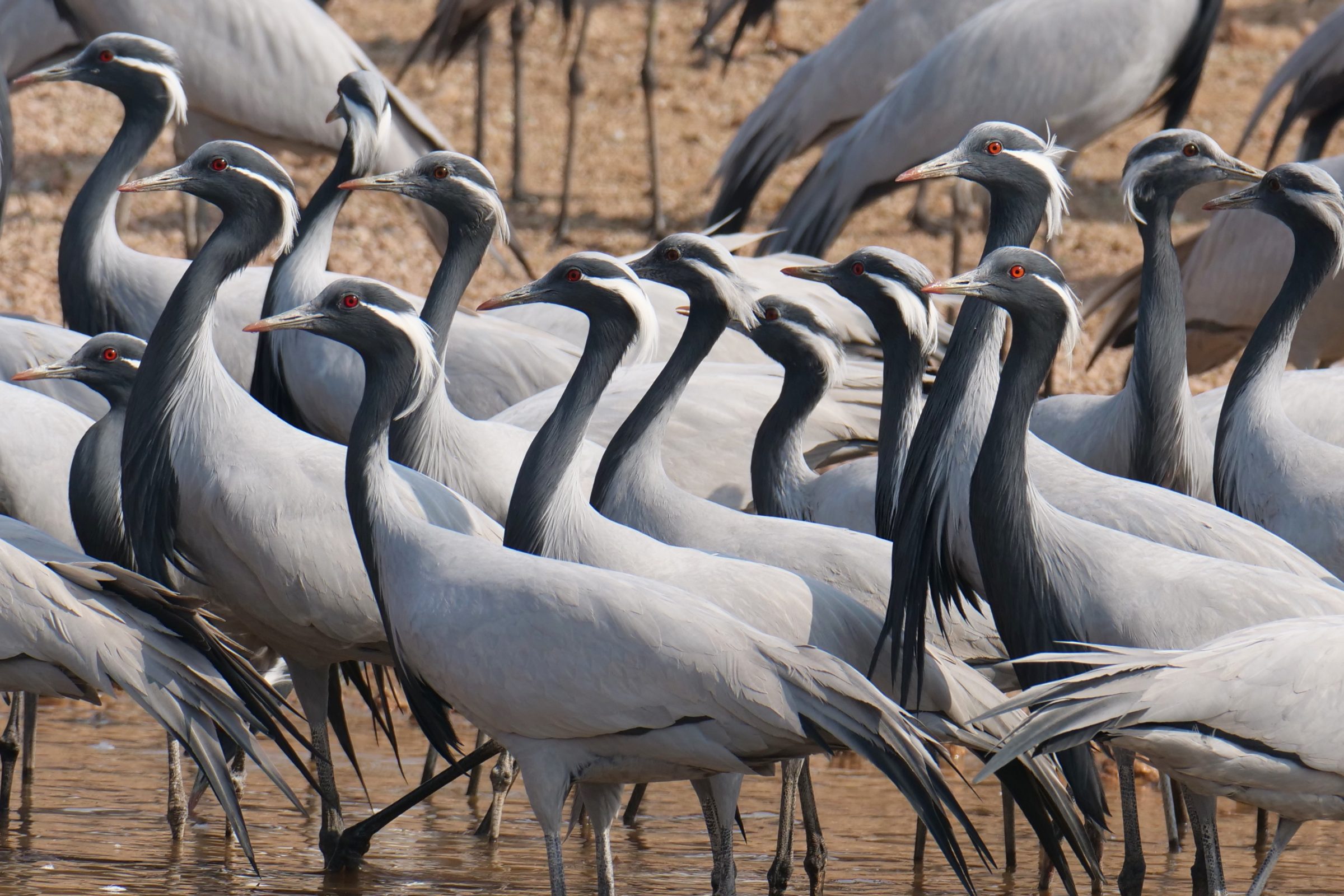
Many thousands of Demoiselle cranes now prefer to spend the cooler months at Khichan – and the resulting spectacle has put this otherwise “unremarkable” village on the global nature tourism “map”.
The degree of care taken to protect “their” cranes is extraordinary, by any standard.
In November 2021 Khichan’s cranes were vaccinated against a potentially fatal disease, before any local cases had been recorded.
You are wondering how it is even possible to vaccinate thousands of still-wild birds?
Read this, from The Times of India
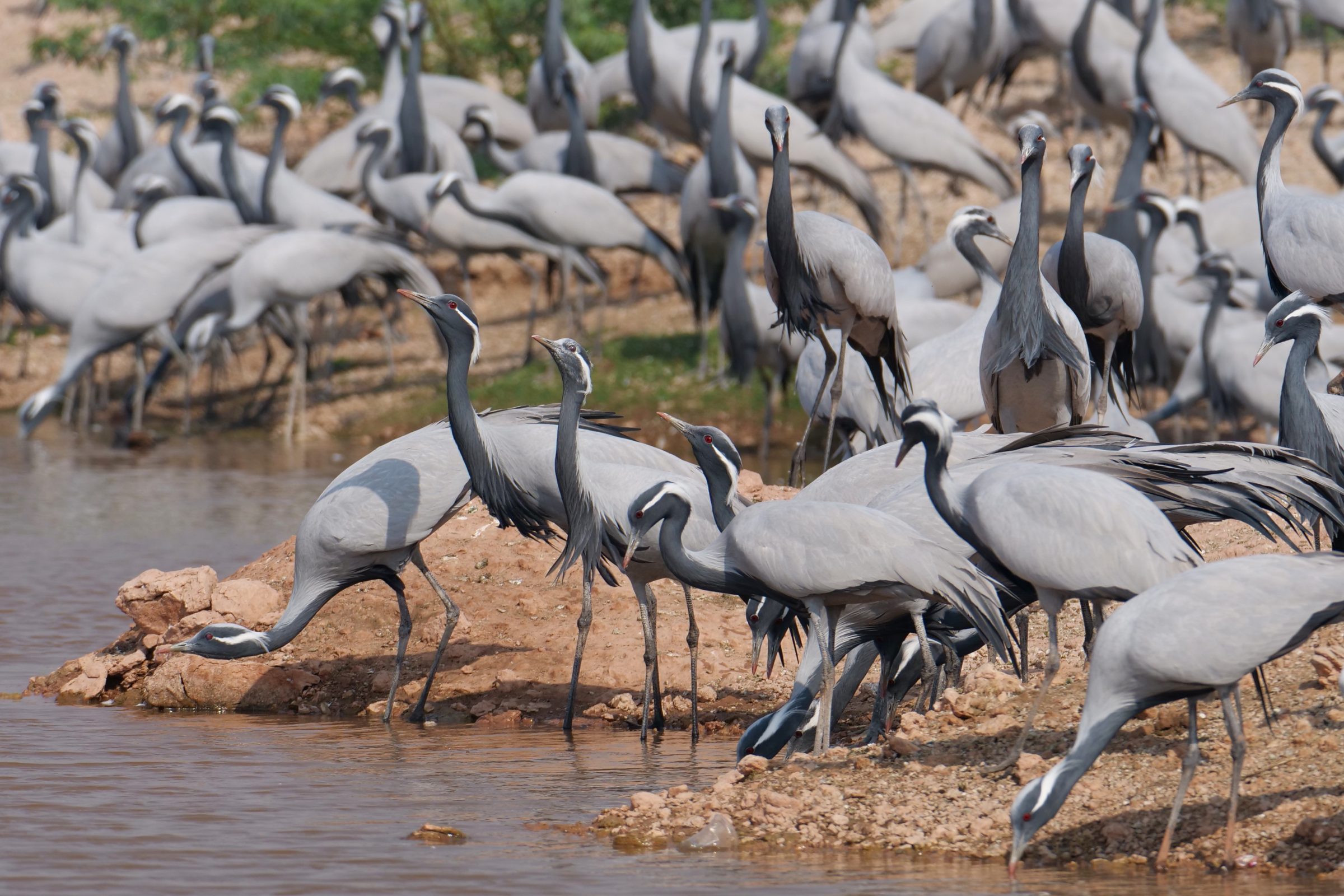
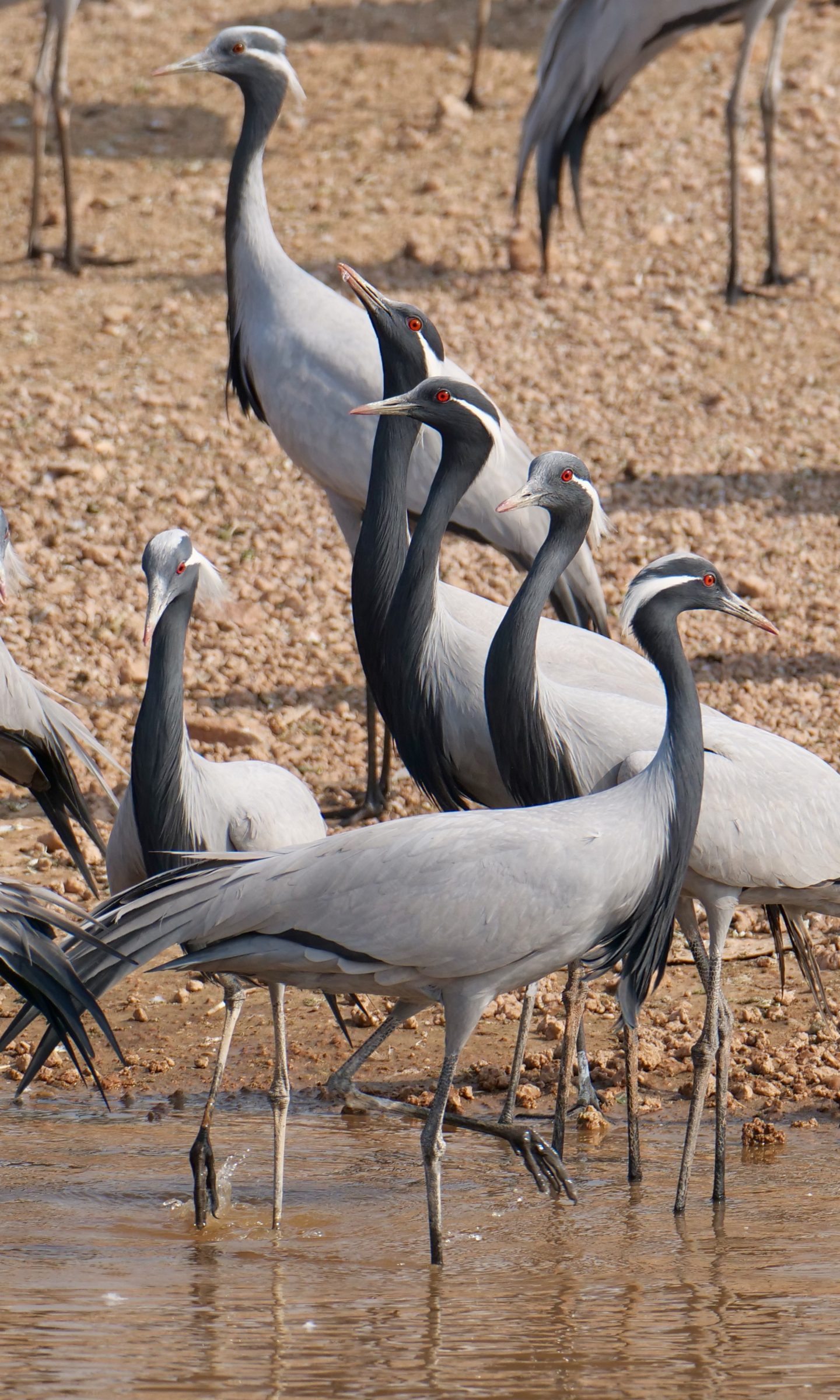
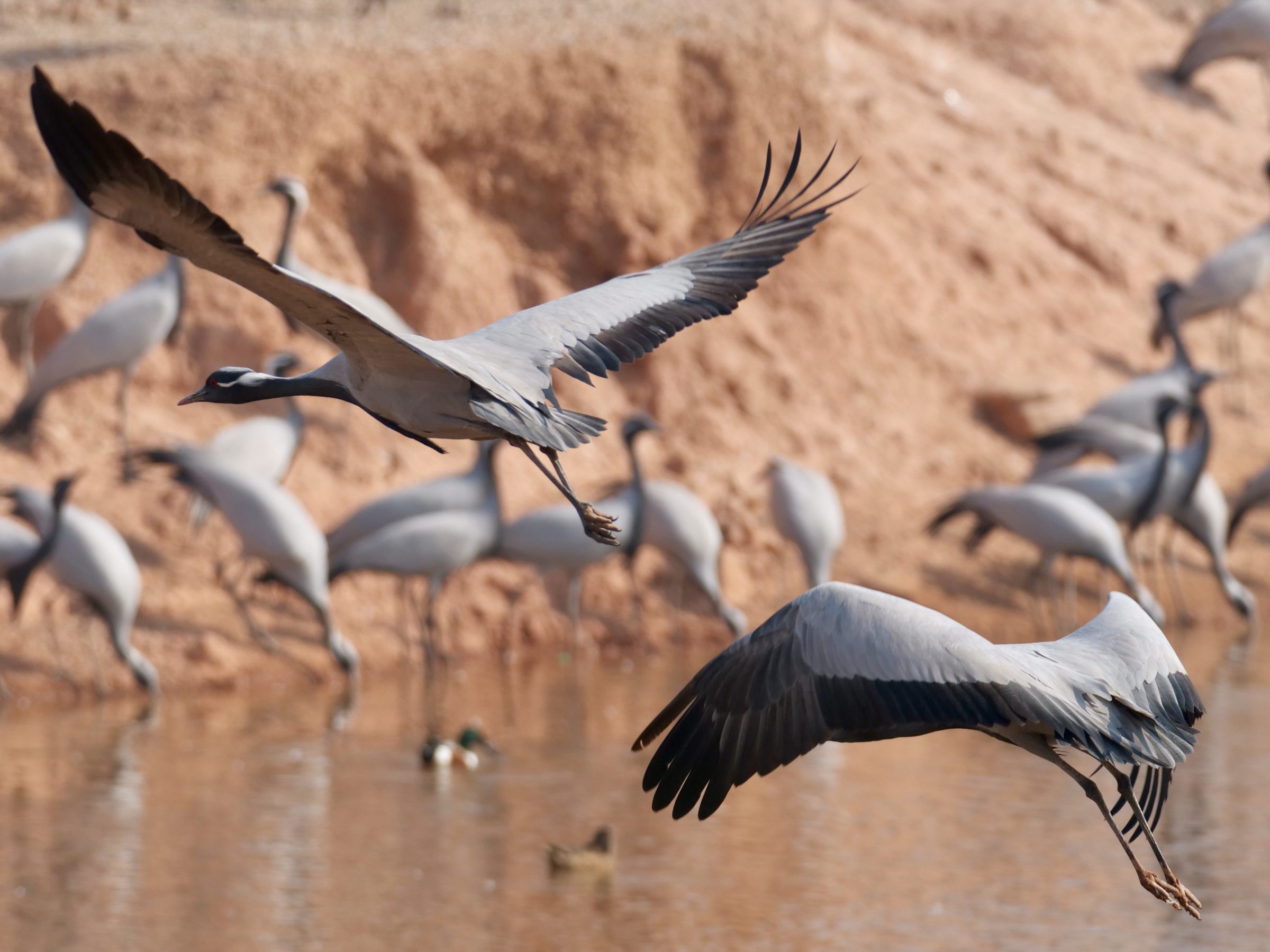
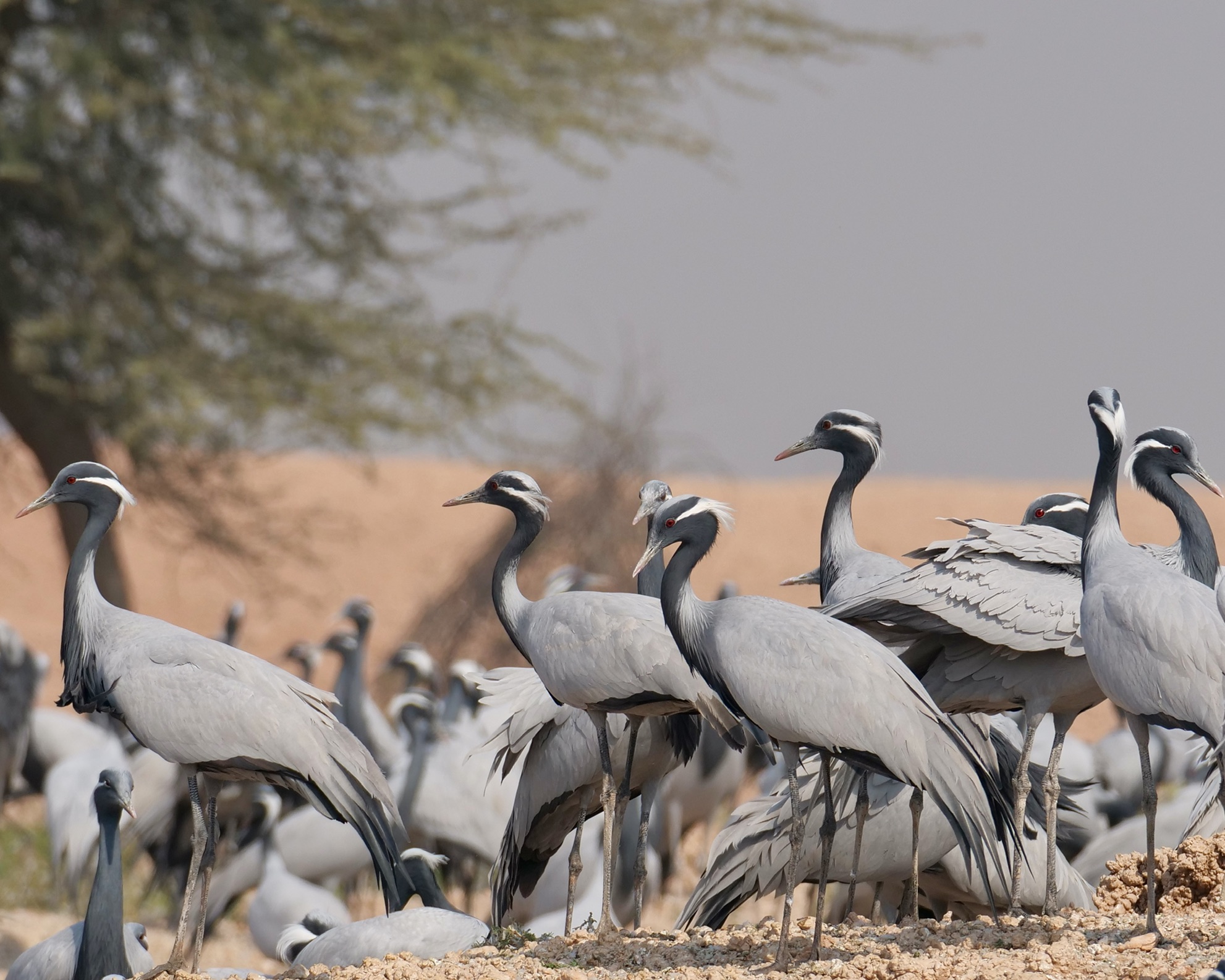
Demoiselle cranes’ summer breeding grounds are thousands of kilometres distant, on the other (northern) side of the Himalayas.
As it happens, several months earlier, in October 2019, my beloved and I were on the Tibetan Plateau, circa 4,000 kilometres crane-flying distance from western India.
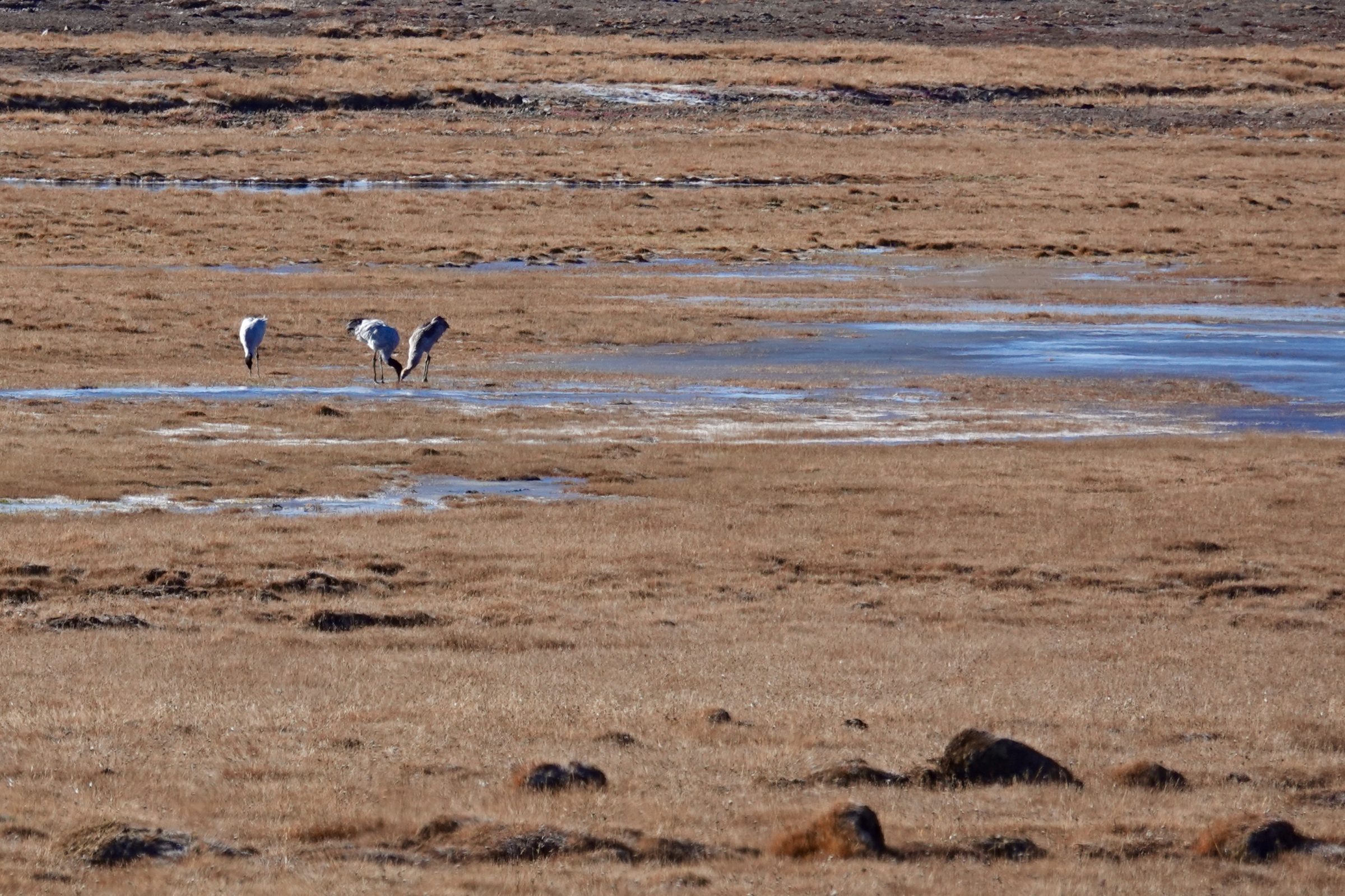
We did see a few Demoiselle cranes there; presumably, they were stragglers”, yet to head South.
The individuals pictured above had just endured a lightly snow-dusted night, and a very frosty early morn.
By 9.30 am the temperature was rapidly rising; it was a few degrees below zero when I took the photo, with a wind-chill that made it feel much colder. However, on that day at least, within a couple of hours it would beome much warmer.
The altitude of the marshy flats in the above picture (taken, looking down from just below the crest of a pass) is circa twice that of the Australian continent’s highest point.
The Tibetan Plateau’s cooler months (ditto Mongolia’s, Siberia’s, northeastern China’s) are lethally severe.
Only recently has the “mystery” been “solved” of how Demoiselle cranes who breed in the aforementioned Eurasian locations manage to reach western India, and then – next Spring – safely return to their breeding places.
On their Autumn way to India they do cross the Himalayas, with a deal of (seasonal) wind assistance.
On their Springtime return journey, however, Himalayan winds and temperatures are “wrong”, so Demoiselle cranes fly a much longer route, around the world’s mightiest vertical barrier.
Coming into India, they fly through/over the eastern Himalayas, then head southwest over India’s northern plains.
On departing India, they first head a little further southwest, then fly a considerable distance north (staying west of the Himalayas), until – once safely north of the mighty mountains – the cranes turn right, and head east/northeast to their breeding grounds.
This extraordinary “loop” migration is, I think, peculiar to the Demoiselle crane.
Click this to see a brief explanation, with map.
Click here for a more comprehensive one, with a more detailed map.
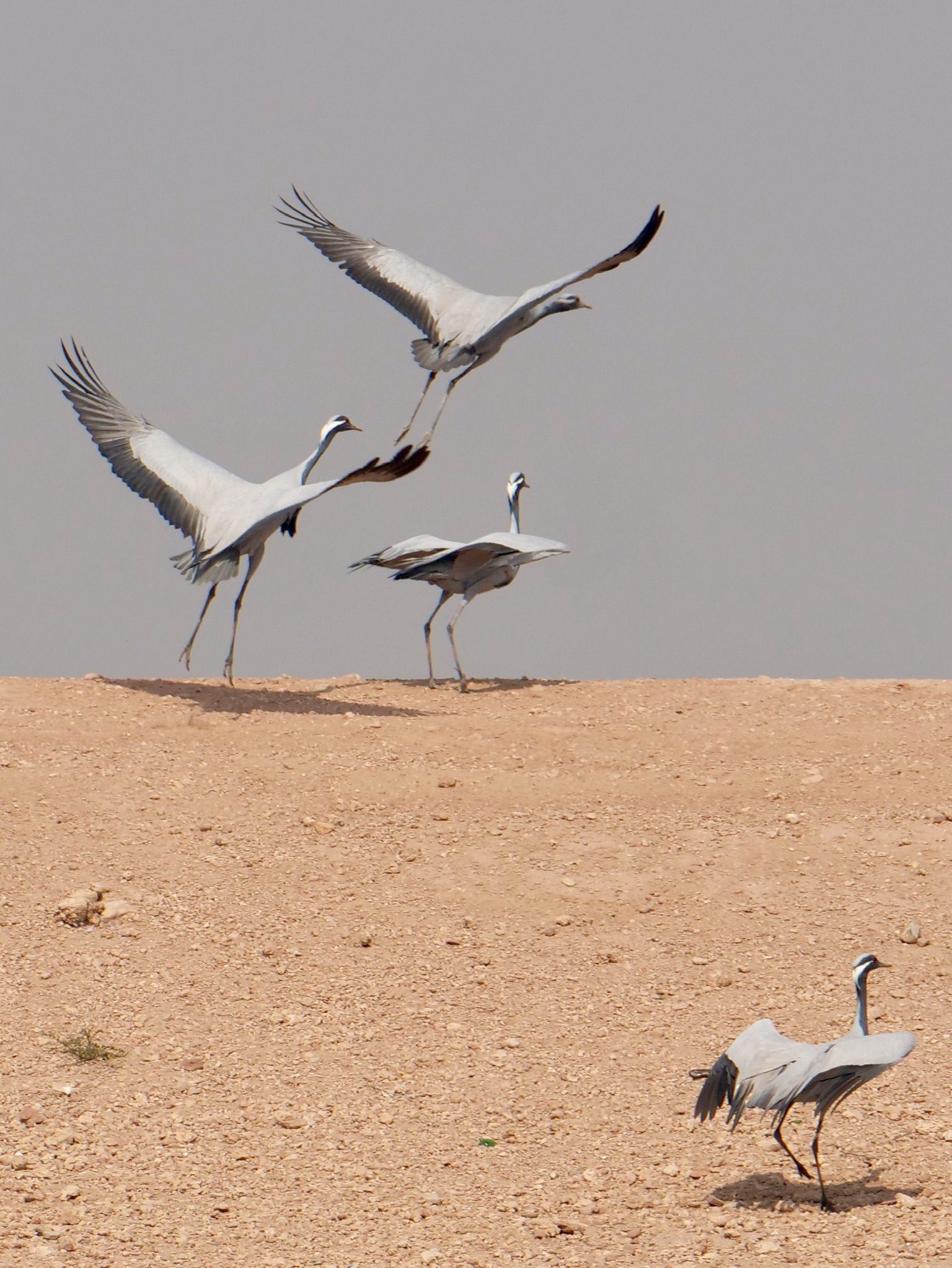
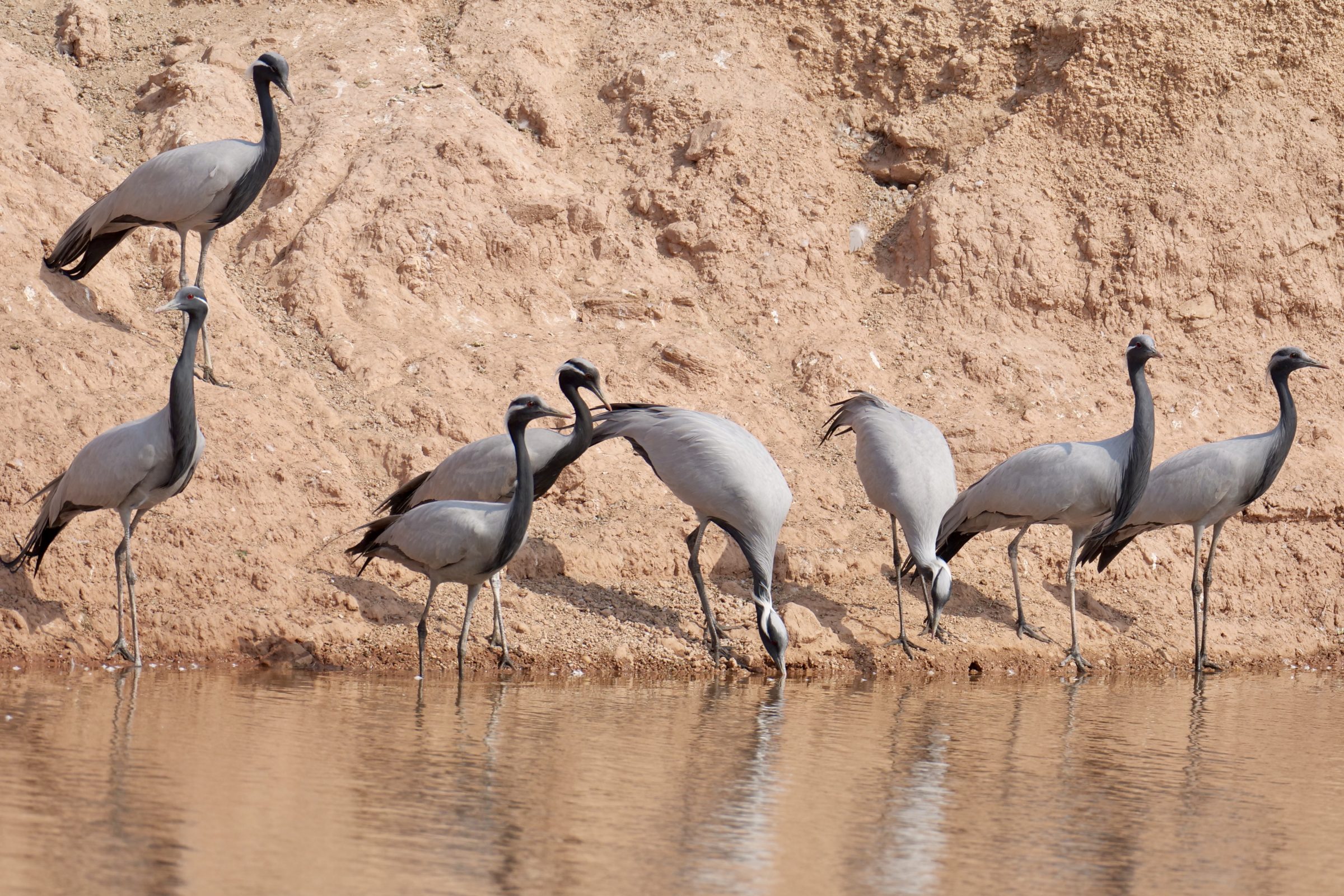
Thanks very much Doug: more fabulous photos, and a very interesting article. I just wanted to let you know, though, that your link to the The Times of India is taking me to a journal article in Movement Ecology.
Thank you Geraldine; link is now pointing to the intended target.